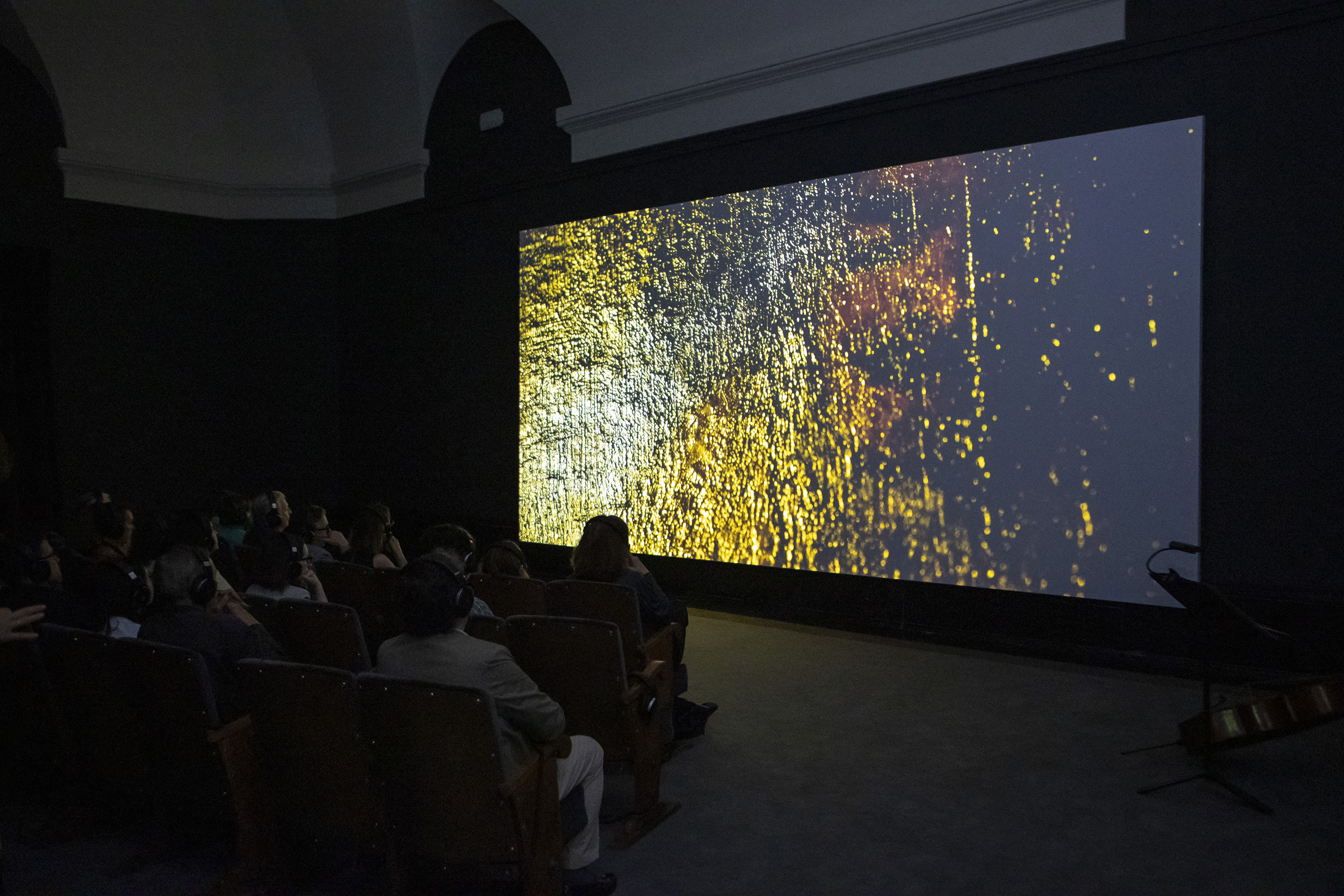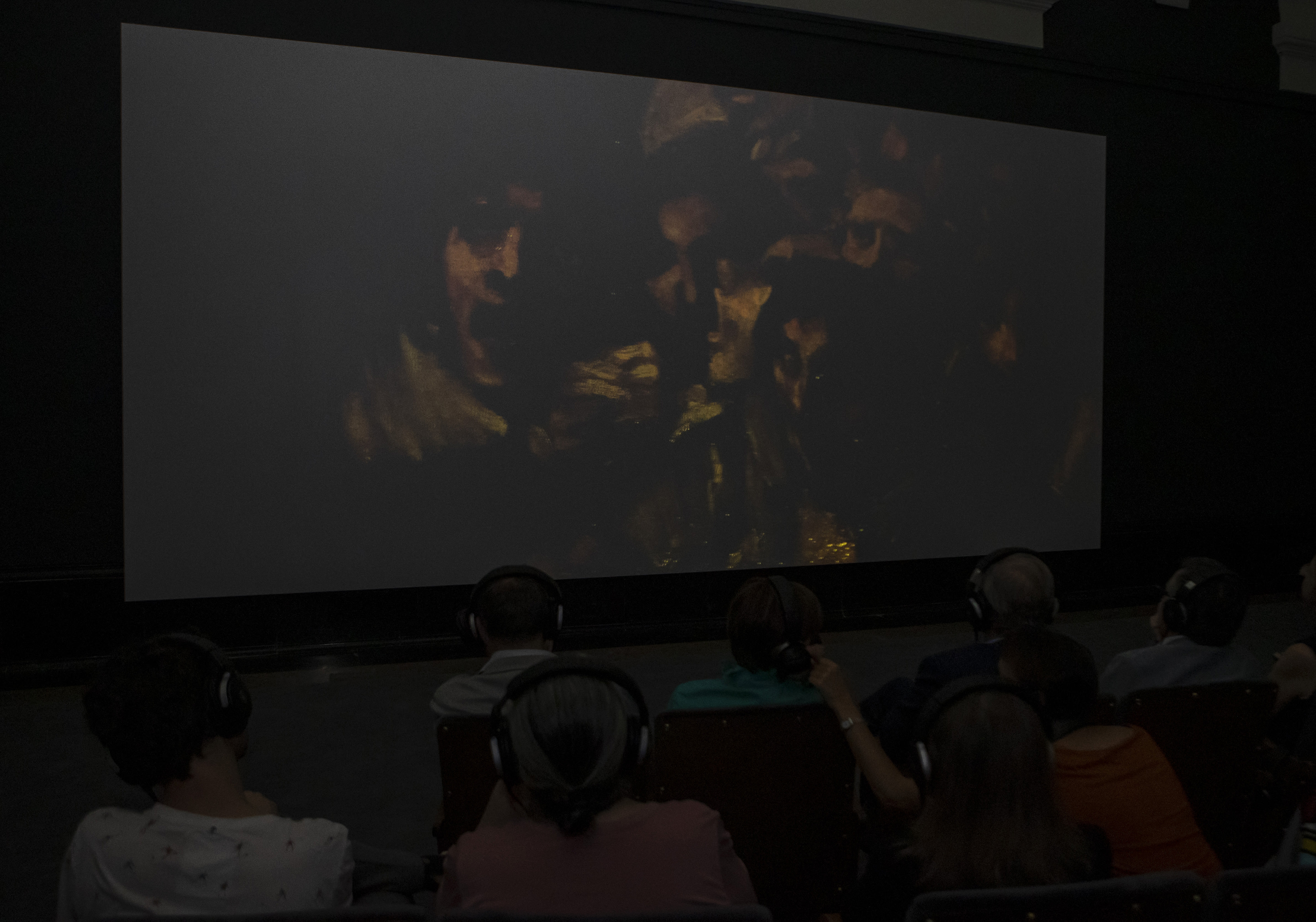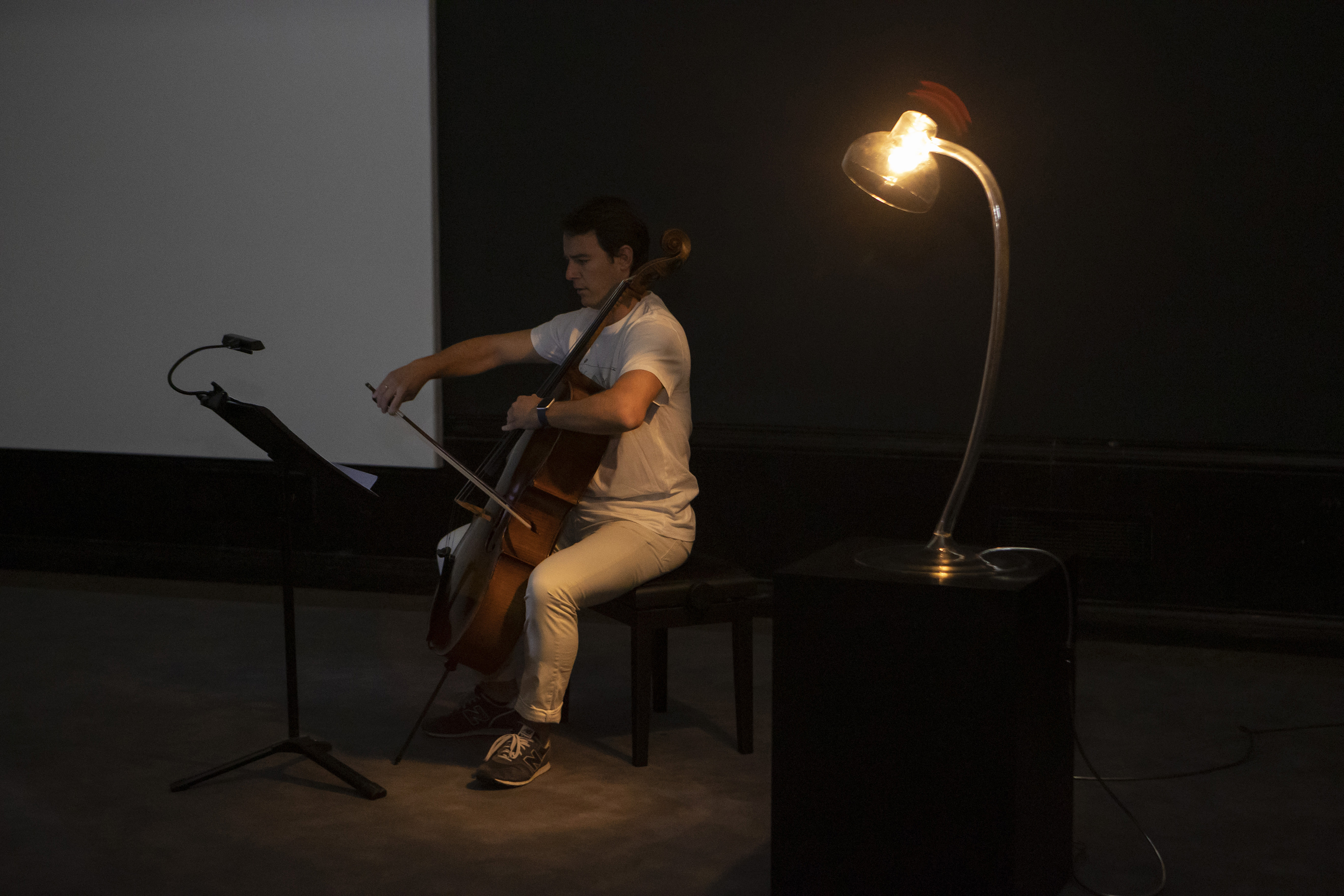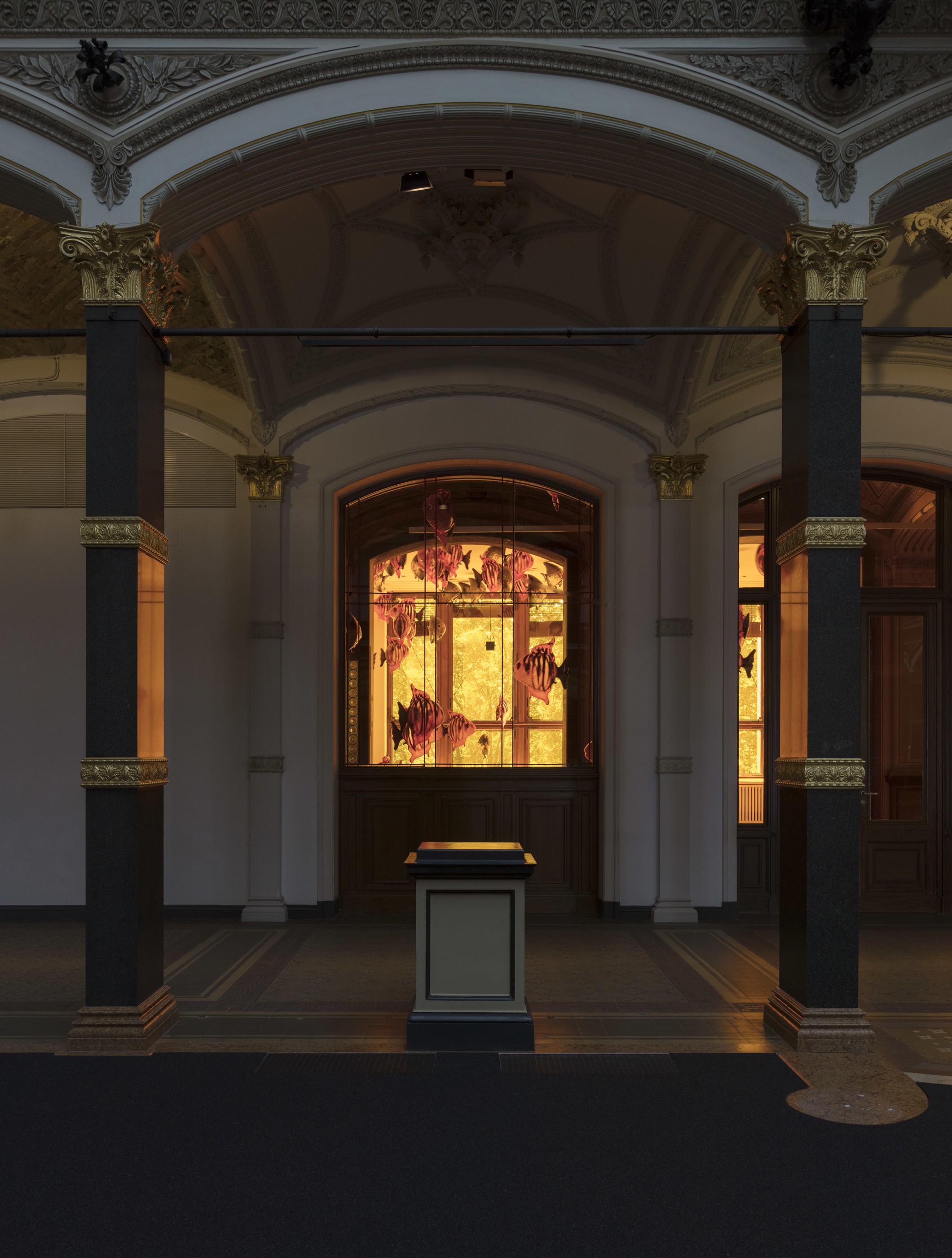Overview
In this 40-minute audiovisual work, made in collaboration with the Beyeler Foundation, Philippe Parreno brings to life Goya's now vanished home, where he created his disturbing "Black Paintings".
In this 40-minute audiovisual work, made in collaboration with the Beyeler Foundation, Philippe Parreno brings to life Goya's now vanished home, the Quinta del Sordo, where he created his disturbing "Black Paintings".
Between 1819 and 1824 Goya executed a series of fourteen works directly into the walls of the two floors of his house. The building was demolished in 1909 but the paintings remain associated with their original location. Using cutting-edge image and sound technology, Parreno offers us the chance to travel back in time and experience Goya's paintings in the setting for which they were originally painted.
In Parreno's filmic work the house is almost unoccupied and the air flows silently through it. The year is 1823, or perhaps 1825: this is not clear. Nor is the season of the year; it could be winter or summer, day or night. The images in this project establish connections between the paintings, forming a cosmology or universe which they themselves have created. As mythology has taught us, behind all cosmologies there is a cosmogeny, a process of the creation of universes, an attempt to order chaos. The original nymphs were associated with topography as both beings and spaces. This science-fiction film aims to represent that 'space-existence', a process in which Goya's house becomes anthropomorphic so that it will forever remain a sublimation of the place in which the work of art was present.
To reproduce that space we have to travel in time. Parreno makes use of exceptionally fast cameras (500,000 frames per second) to record the paintings. Time makes contact with them and stops. The camera desperately scans the space in search of signs. Parreno reconstructs Goya's house and garden in three dimensions in order to find its original acoustics. Where previously there was relief, now there is sound: that of fire and light traversing this forgotten space. The reflections of the lights in the paintings appear like lighthouse lanterns on the screen, intermittently illuminating what has long remained unlit.
The film is shown several times each day at precise moments with a musician introducing each showing. Headphones allow for a binaural experience of the sound track which guides us into this interior world. The musician introduces himself before performing an original cello composition by J. M. Artero, which leads into the film. This music is not audible with the headphones but it already disturbs the limits of this complex space. Interior and exterior combine, as do the imaginary and the real. The lights flicker and vary in intensity before fading into the darkness of the gallery.
In the artist's words: "The principal issue in this work is that of image and space, regardless of the priority between the two, given that these two elements which constitute our realities stand out among all the other information, forming an indissoluble connection. This is an act of legerdemain between a space which becomes lost in its game of becoming an image, and images which aim to produce a space. 'Hidden' and 'invisible' beings appear and disappear in the film."







